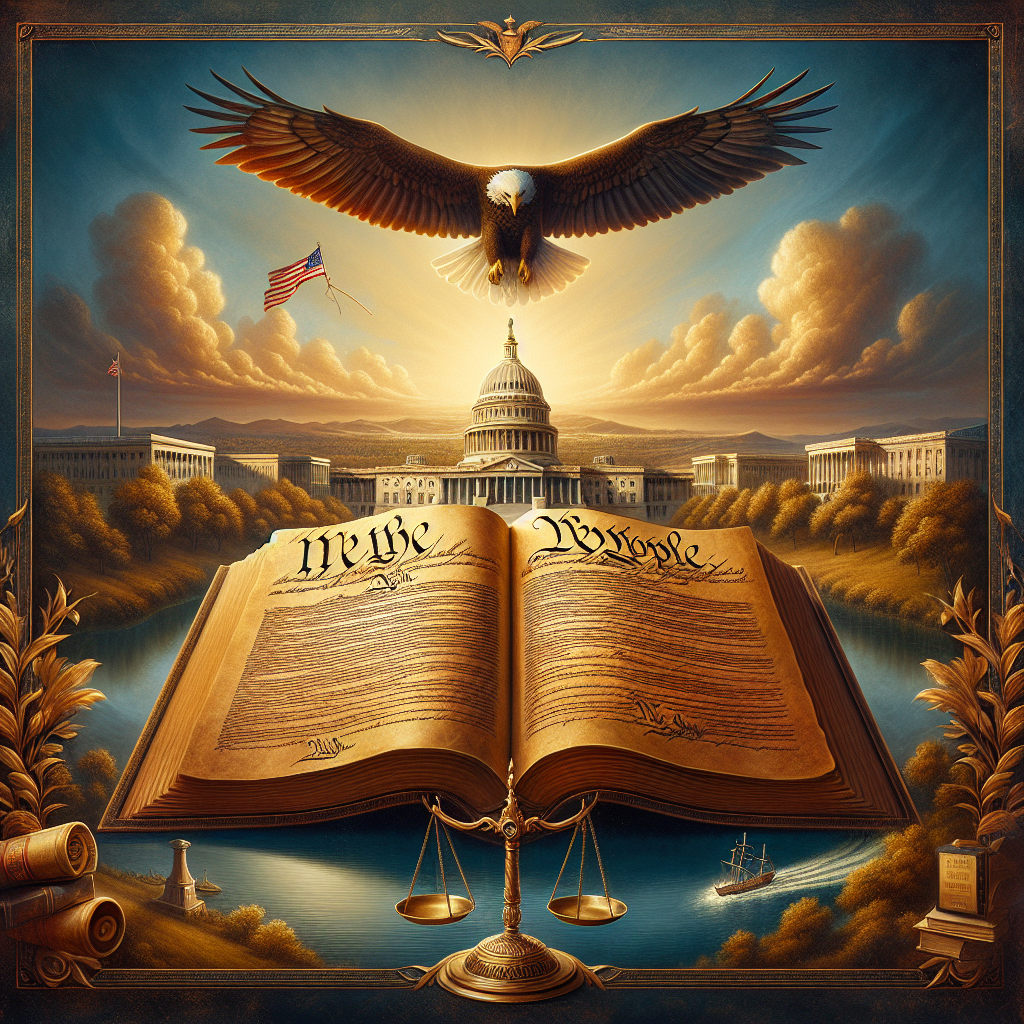A Comprehensive Guide to the American Constitution
The United States Constitution stands as a cornerstone of democracy, a guiding document that shapes the nation. Understanding its intricacies is essential for appreciating how the American government functions today. In this guide, we’ll delve into the history, structure, and significance of the Constitution, exploring its impact on everyday life.
The Birth of the American Constitution
Drafted in 1787 and ratified in 1788, the American Constitution emerged from the need to create a more unified nation. The Articles of Confederation, the country’s first constitution, proved ineffective due to its weak central government. This realization led to the Constitutional Convention in Philadelphia, where delegates from 12 states gathered to draft a new document.

Under the leadership of figures like George Washington, James Madison, and Benjamin Franklin, the Constitution was born. These framers were inspired by Enlightenment ideas and sought to balance power between the federal and state governments while safeguarding individual liberties.
Structure of the Constitution
The Constitution is composed of a Preamble, seven Articles, and 27 Amendments. Each component serves a specific purpose, creating a framework for governance and law.
Preamble
The Preamble sets the stage, outlining the Constitution’s purpose: “to form a more perfect Union, establish Justice, insure domestic Tranquility, provide for the common defence, promote the general Welfare, and secure the Blessings of Liberty to ourselves and our Posterity.” These words reflect the framers’ vision for a unified nation.

Articles
The seven Articles detail the structure and powers of the federal government:
Article I – The Legislative Branch
This article establishes Congress, dividing it into the Senate and the House of Representatives. It grants Congress the power to make laws, levy taxes, and regulate commerce.
Article II – The Executive Branch
Article II outlines the powers of the President and the executive branch. It describes the President’s roles, including Commander-in-Chief of the armed forces and Chief Diplomat.
Article III – The Judicial Branch
This article creates the Supreme Court and authorizes Congress to establish lower courts. It ensures an independent judiciary to interpret laws and safeguard justice.
Articles IV-VII
These articles address the states’ powers, the amendment process, federal authority, and the Constitution’s ratification. They ensure a balance between state and federal responsibilities.
Amendments
The 27 Amendments reflect the Constitution’s adaptability. The first ten, known as the Bill of Rights, guarantee fundamental freedoms such as speech, religion, and assembly. Subsequent amendments address issues like slavery abolition, voting rights, and term limits for presidents.
Significance of the Constitution
The Constitution is more than a legal document; it’s a living testament to democratic ideals. Its ability to evolve through amendments ensures its relevance in changing times. This adaptability has allowed the United States to confront challenges like civil rights, technological advancements, and globalization.
Moreover, the Constitution embodies the separation of powers, a system that prevents any one branch from dominating. This system of checks and balances is crucial for maintaining a fair government, where power is distributed and accountability is enforced.
Impact on Everyday Life
Though often seen as an abstract concept, the Constitution affects daily life in tangible ways. It protects freedoms that Americans exercise regularly, from voicing opinions to practicing religious beliefs. Additionally, it influences laws that govern everything from education to healthcare.
Understanding the Constitution empowers citizens to engage actively in their democracy. It provides a framework for addressing grievances and seeking justice, ensuring that government actions align with foundational principles.
Conclusion
The American Constitution is a beacon of democracy, guiding the nation through centuries of change. Its structure, significance, and impact are profound, influencing both governance and individual liberties. By appreciating its history and functions, we can better engage in civic life and contribute to a more informed society.
FAQs
What is the main purpose of the Constitution?
The Constitution aims to establish a national framework for governance, balancing power between federal and state authorities while protecting individual rights.
Why is the Constitution considered a living document?
The Constitution is considered a living document because it can be amended to address new issues and reflect societal changes, ensuring its ongoing relevance.
How does the Constitution affect daily life?
The Constitution impacts daily life by safeguarding fundamental freedoms, influencing laws, and providing a system for addressing grievances and ensuring justice.





Leave a Reply
You must be logged in to post a comment.